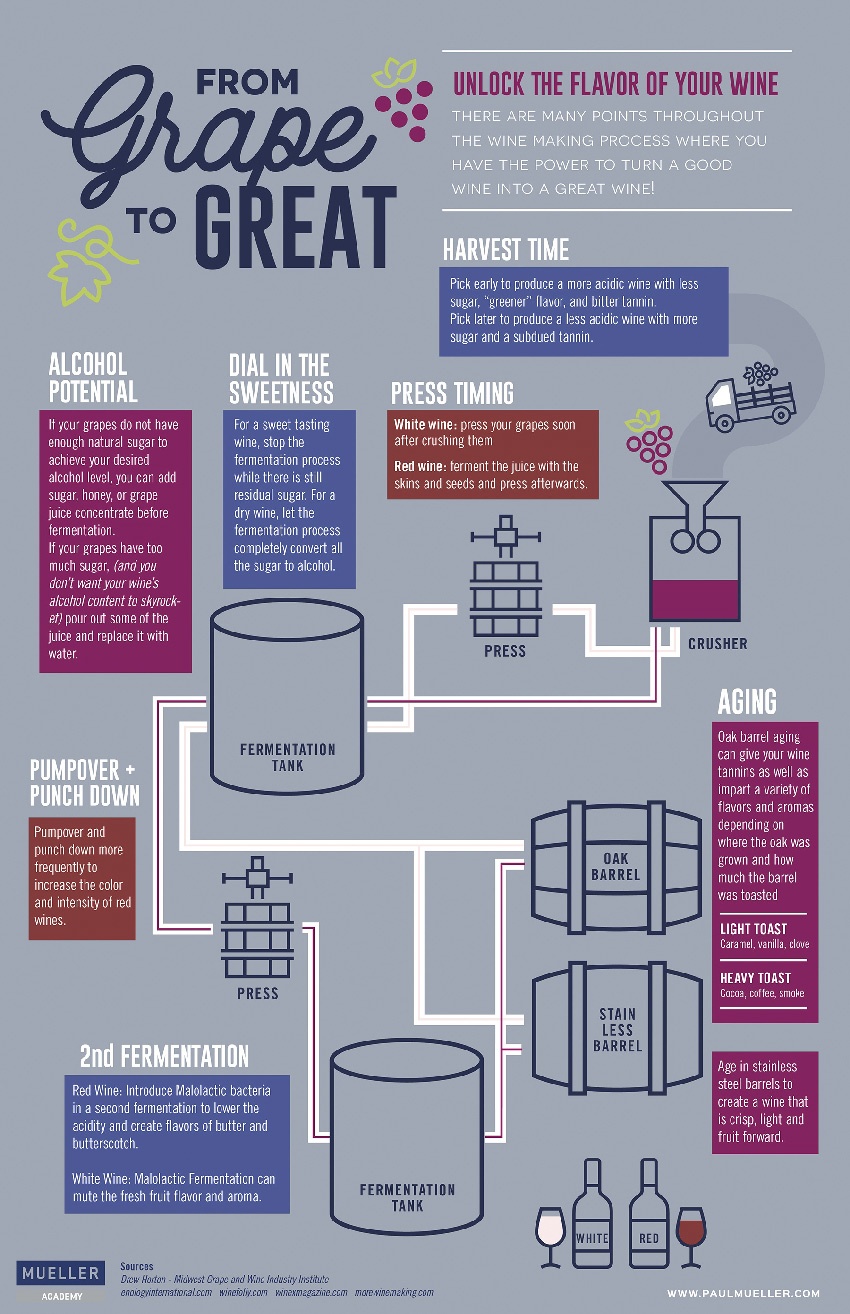Every wine has a unique flavor that is reflected in the intricate melding of the grape, the land and the journey to the bottle. A vintner has a great deal of influence over the flavor nuances throughout the winemaking process and can manipulate each stage to change the final outcome. Details like sweetness, mouthfeel, alcohol content, and intensity are all within the winemaker's control.
(Click to Enlarge)
Harvest Time
Pick earlier in the season to produce a more acidic wine with less sugar, a "greener" flavor, and a bitter tannin. Pick later in the season to produce a less acidic wine with more sugar and a subdued tannin.
Press Timing
To make a white wine you should press your grapes soon after crushing them. When making a red wine, you crush the grapes, then ferment the juice with the seeds and skins, and press afterwards.
Dial in the Sweetness
To create a sweet tasting wine you can stop the fermentation process while there is still some residual sugar in the wine. For a dryer wine, let the fermentation process convert all of the sugar to alcohol.
Alcohol Potential
If your grapes do not have enough natural sugar to achieve your desired alcohol level, you can add sugar, honey, or grape juice concentrate before fermentation. If your grapes have too much sugar, (and you don't want your wine's alcohol content to skyrocket) pour out some of the juice and replace it with water.
Pumpover and Punch Down
You can create a more intense wine by increasing how often you punch down and pump over. The more vigorously you punch down or pumpover will extract more tannins from the grapes skin resulting in a more intense wine.
Second Fermentation
You can go through a second fermentation where you introduce malolactic bacteria to your wine. In a red wine the secondary fermentation will lower acidity and create flavors of butter and butterscotch. In a white wine the malolactic bacteria can mute the fresh fruit flavor and aroma.
Aging
Age your wine in an oak barrel to boost its tannins and impart a variety of flavors and aromas depending on where the oak was grown and how much the barrel was toasted. A lightly toasted barrel will impart caramel, vanilla, and clove flavors and aromas. A barrel with a heavy toast will impart flavors and aromas of cocoa, coffee, and smoke.
Age your wine in a stainless steel barrel to create a wine that is crisp, light, and fruit forward.
To create your next vintage, consider Paul Mueller Company stainless steel wine barrels and stainless steel wine tanks.



